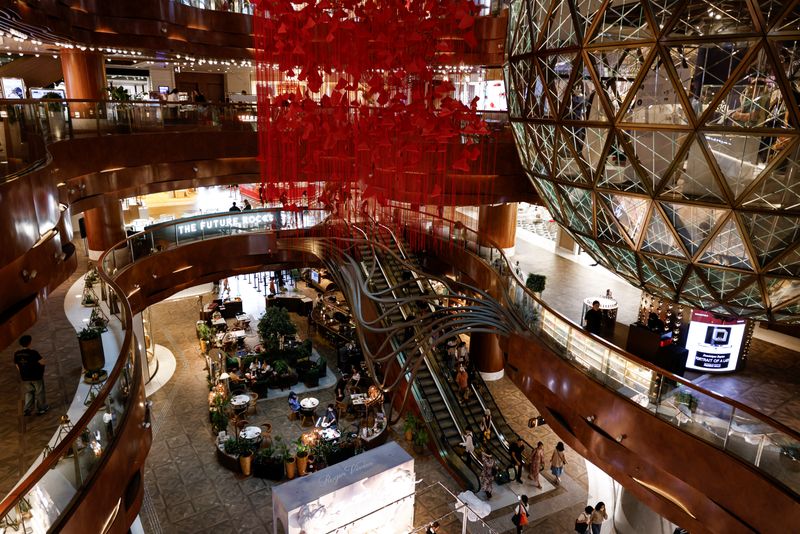
By Jessie Pang and Marcus Lum
HONG KONG (Reuters) – An increase in the duty-free quota for Chinese tourists to Hong Kong may go some way to support the city’s retailers, but visitors from the mainland say prices are still unattractive.
From expanding the solo travel scheme for Chinese visitors to Hong Kong in May to bumping up the duty-free shopping quota, the China and Hong Kong governments are striving to lure tourists from across the border.
This comes as Hong Kong residents increasingly flock to the mainland for shopping and entertainment, saying prices there are generally lower and the service is better, and the Asia financial hub struggles to recover after the pandemic.
Starting from July 1, the duty-free shopping quotas for Chinese tourists in Hong Kong were increased from 5,000 yuan ($688) per trip to 15,000 yuan for those visiting via six land border control points.
The new measure will be expanded to include Chinese visitors entering Hong Kong at all border control points from Aug. 1.
The government said it expects the measure to bring additional shopping spending of between HK$8.8 billion ($1.13 billion) and HK$17.6 billion to the city.
Annie Tse Yau On-yee, chairwoman of the Hong Kong Retail Management Association, said it would take time to see the benefits of the changes.
Hong Kong’s May retail sales slumped 11.5% from a year earlier, government data showed on Tuesday, reflecting a surge in outbound trips, strength in the local currency and a high base of comparison for visitor spending last year.
“Considering the speedy business downturn, together with high rent and manpower costs, other economic factors, such as the strong Hong Kong dollar, also pose challenges to the retail industry,” said Bond Law, an executive director of the association, adding the situation is expected to remain difficult for some time.
Harbour City, a shopping mall in the tourist area of Tsim Sha Tsui, said it believes “this policy change will have a positive impact, driving up retail sales and attracting more tourists to Hong Kong and to our mall”.
Hong, 49, and his wife Chen 43, who were visiting Hong Kong from China’s Guangxi province for the first time, said the cost of dining in the city was still a barrier.
“The food here is five times more expensive than the food back in the city where I currently live,” Chen, who only wanted to be known by her surname, said as she held bags of clothes and cosmetics from various luxury brands.
The number of Chinese visitors has risen in recent months, according to data from the tourism board, but analysts say consumption trends have changed.
Cost-conscious Chinese tourists have replaced many of the cash-rich mainland travellers who once flocked to Hong Kong, with some only interested in free walking tours of the city and taking photographs.
Sienna Zheng, 29, a tourist from the southern Chinese city of Shenzhen said she did not plan to purchase many luxury goods during her fourth visit to Hong Kong.
“I came to visit different places for photos and try out the foods,” Zheng said, adding that even though the products in Hong Kong are tax-free the prices are similar to the mainland.
($1 = 7.2701 Chinese yuan)
($1 = 7.8093 Hong Kong dollars)
(Reporting by Jessie Pang and Marcus Lum; Editing by Anne Marie Roantree and Jacqueline Wong)
EMEA Tribune is not involved in this news article, it is taken from our partners and or from the News Agencies. Copyright and Credit go to the News Agencies, email news@emeatribune.com Follow our WhatsApp verified Channel





